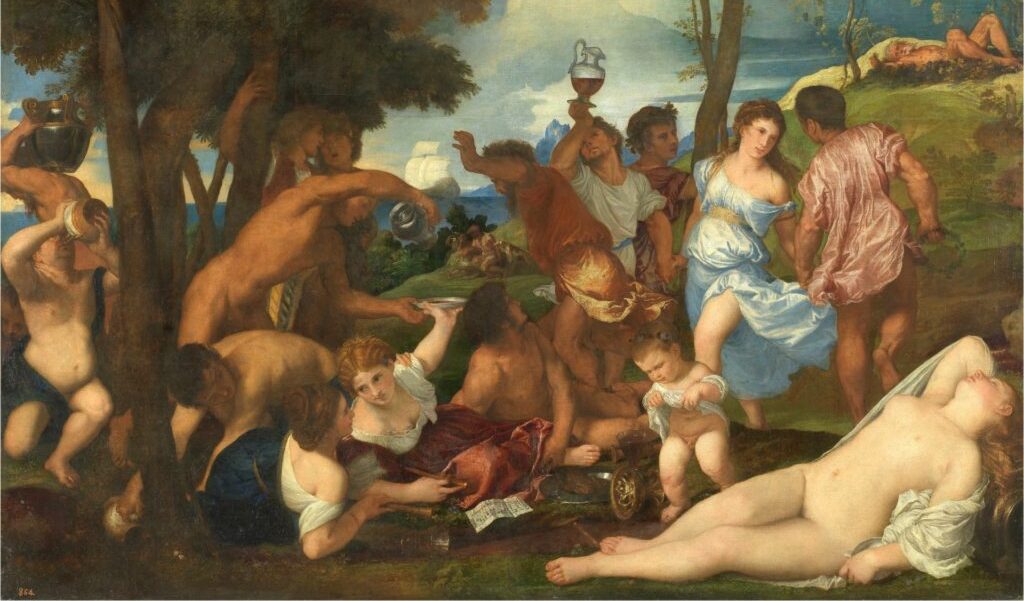MADRID – The latest exhibition at the Prado, ‘Mythological Passions’ is on display until 4th July. Featuring works by Titian, Rubens and Van Dyck, it is a unique opportunity to see exemplars of European mythological art.
Mythology has been a recurring theme in art throughout the ages. Painters have visualised the stories of the gods on canvas, often letting their imaginations run wild. The mythology of Ancient Greece and Rome gave artists greater freedom and poetic licence than other religious themes.
Until 4th July, Room C, Jerónimos building at the Prado hosts Mythological Passions: Tiziano, Veronese, Allori, Rubens, Ribera, Poussin, Van Dyck, Velázquez. The exhibition’s sponsor is Fundación BBVA.
This is an unparalleled opportunity to contemplate a selection of 16th and 17th century European works. This is thanks to the collaboration between the Prado, the National Gallery in London, the National Galleries of Scotland and the Isabella Stewart Gardner Museum.
Love, desire and beauty
The 29 chosen works delve into the gods’ sensual passions where beauty, love and desire rule.
As Alejandro Vergara, Chief Curator of Flemish and Northern Schools Painting at the Museo del Prado, is reported by Spanish newspaper ABC: “Our intention with this exhibition is to come closer to ways of feeling and thinking learned from the classical writers which defined European culture in the 16th and 17th centuries. The idea that beauty, desire, love and sex are closely interconnected and that we are at their mercy, as with are with nature, is part of that culture.”
The texts that refer to those themes, such as Homer’s Illiad and Ovid’s Metamorphoses, were highly esteemed by Renaissance and Baroque artists. They in turn aimed to portray them with deep emotion.
Of particular significance are the loans of Venus and Cupid based on a Michelangelo drawing, Perseus and Andromeda by Veronese, and Landscape in a Storm with Pryamus and Thesbe by Poussin.
Rethinking the Greco-Roman tradition
Titian most influenced the rethinking of the Greco-Roman tradition during the Renaissance. The two series of mythological compositions he painted for the Duke of Ferrara between 1516 and 1524 and for Philip II between 1552 and 1563 are among the most celebrated of their time. Not since the 16th century hav the six compositions – known as the poesie – been together in Spain.
Titian influenced Veronese, Van Dyck and many others. One of the innovations of the 16th century was the reclining female nude. Girogione and Titian devised this new typology in Venice around 1500. It subsequently influenced Michelangelo, Velázquez, Goya and Picasso. Their eroticism is clear; with the nudes frequently found in bedrooms and private spaces.
Titian had a strong influence on Rubens, in particular. Along with classical literature, his paintings provided Rubens with the main model for his work. He defined a world of nymphs, satyrs and other creatures dancing in sensual poses.
17th century mythological passions
Rubens remained close to the classical spirit, while Velázquez and Ribera translated the myths into realist language. Poussin added a frisson of emotion, while Van Dyck’s customary elegance shines through.
The exhibition’s catalogue analyses the 29 works and the importance of mythology for the Renaissance and Baroque artists.
According to Miguel Falomir, Director of the Museo del Prado, “The presentation of the exhibition is of two-fold merit: firstly, as it reunites one of the most beautiful, complex and influential series within European painting, and secondly due to the efforts of the staff in making it possible during the Coronavirus pandemic”. He said the support and confidence of the sponsor, Fundación BBVA, was fundamental to its success.


